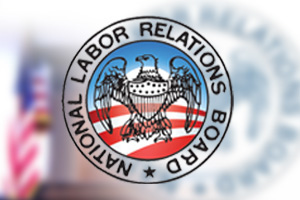Currently, the definition of joint employment is all over the place, depending on the agency. Before 2009, joint employment essentially required direct control of the other employer’s employees. In other words, if the joint employer was controlling all work situations such as hiring and firing, joint employment was likely to be found. Under the Obama administration, joint employment was based not just on direct control, but indirect control. In other words, signing the checks to the agency was enough to have joint employment.
The most famous case by the National Labor Relations Board (NLRB) was a strange one that pushed that theory to the limit. In Browning-Ferris Industries of California Inc., 362 NLRB No.186 (Aug. 27, 2015), Browning-Ferris was hiring a staffing agency’s (Leadpoint) employees into a specific non-union job classification. The staffing agency’s employees were trying to organize and were going through a union election. The NLRB ruled that Browning-Ferris employees in that classification, by virtue of having the temporary employees working for them, were eligible to be part of the union campaign and vote in the election. Browning-Ferris contested that finding, and the NLRB Board ruled that indirect control is sufficient for joint employment and for the employees to be organized.
With the change of administrations, the move towards the traditional definition of control was tried in the case of Hy-Brand Industrial Contractors Inc., 365 NLRB No. 156 (Dec. 14, 2017). In that case, direct control was required, and the indirect control approach was overturned. However, due to conflict of interest with a NLRB member, the case decision was withdrawn.
The impact of the Browning-Ferris case on employers can cause havoc in other government enforcement actions. For example, in the Office of Contract Compliance Programs’ (OFCCP) August 5, 2014 FAQ, the Agency set forth the factors used by the court in Nationwide Mutual Insurance v. Darden, 503 U.S. 318 (1992), as the test contractors should use to determine whether individuals are “workers” of the contractor and should be treated as employees for the purpose of inclusion in the contractor’s AAPs.
Unless Browning is overturned, OFCCP will likely take the position that temporaries working in a contractor’s establishment who are on the payroll of a staffing agency are also the employees of the contractor, if the contractor exercises common law “control” over the “essential terms and conditions of employment.” In this context, control can be direct or indirect. If the OFCCP determines that a joint employment relationship exists, the next logical step is the demand that the contractor include the temporaries in the AAP for that establishment.
Moreover, agency employees generally receive lower pay and less benefits than the comparable worker. OFCCP would require that these employees be included in the compensation analysis, which could lead to liability for the contracting employer.
On September 14th, the board issued a notice of proposed rulemaking, proposing a new federal regulation that requires the actual exercise of substantial, direct, and immediate control over essential terms and conditions of employment before a business can be deemed a joint employer. It should be finalized sometime early next year.
Furthermore, other agencies have joint employment definitions as well. In the Equal Employment Opportunity Commission’s (EEOC) Compliance Manual Section 2: Threshold Issues 2-III B(1)(a)(iii)(b), the term "joint employer" refers to two or more employers that are unrelated or are not sufficiently related to qualify as an integrated enterprise, but where each one exercises sufficient control of an individual to qualify as his/her employer. The "joint employer" issue frequently arises in cases involving temporary staffing agencies. A charge must be filed against each employer to pursue a claim against that employer.
Wage and Hour has their own definition. Joint employment exists under the FLSA and uses an Economic Realities Test to assess whether the individual workers are economically dependent on the putative joint employer: Does the employee have two (or more) technically separate but related or associated employers or does one employer provide labor to another employer and the workers are economically dependent on both employers. Therefore, the contracting employer could be liable for the agency’s FLSA violations such as time worked or misclassification. However, the Department of Labor (DOL) has decided to do rulemaking to ensure consistency within the agency of the definition of joint employment.
Not to be outdone, the federal courts have their interpretation as well. Without getting into too much detail, the court generally use two reasonable tests: the economic realities and control tests to determine joint responsibility. However, the 4th Circuit Court of Appeals has a new test: Either the two companies are “acting entirely independent of each other and are completely disassociated with respect to the individual’s employment,” or they are “not completely disassociated.” The focus is on the relationship between the putative joint employer – not the employer to the employee. It should be noted that all judges were Obama appointees who came up with this definition.
At this point, HR heads are spinning. Depending on the situation and location, there could be a different definition to joint employment. Hopefully this administration will create a single consistent standard that could apply to all.
Source: Thomson Reuters 10/12/18